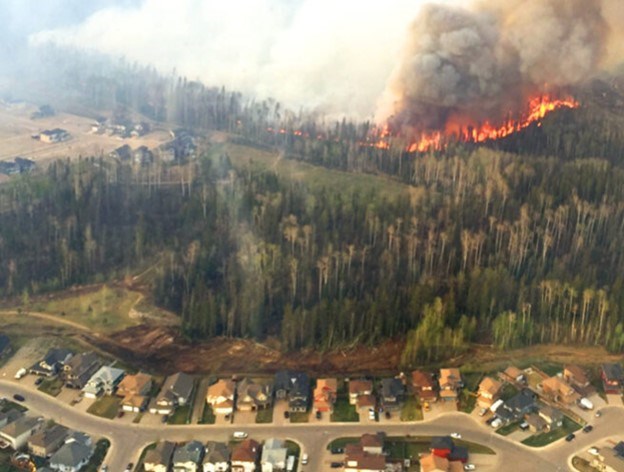The outdoor recreation and forest conservation advocacy group trying to protect the West Bragg Creek/Moose Mountain area from the loggers’ saws says it is being kept busy chasing its tail by the timber company set to clearcut this year, and the provincial department responsible for giving them permission.
The loggers are telling them to talk to the provincial minister of forestry. The minister is telling them to talk to the loggers.
Shaun Peter of Guardians of Recreational Outdoor Wilderness (GROW) said they are trying to convince the powers that be to commit to implementing the FireSmart program in the area, as a prudent protection, in light of the increase in wildfires across North America in recent years.
To that end, GROW met with West Fraser Timber Company (WFTC – formerly Spray Lake Sawmill in Cochrane) on October 11, and were told they can’t follow FireSmart guidelines without direction from the minister.
Without it being designated as FireSmart by the province, WFTC said they have to harvest under standard ground rules. Peter said those rules leave the landscape highly susceptible to fire, with fine fuels left behind, and a high density flammable coniferous regrowth.
So they scheduled a meeting with Alberta Minister of Forestry and Parks Todd Loewen.
“We met with the minister of forestry Loewen on Dec 4 and discussed all of our concerns including economic impact with minimal, or even a negative wildfire protection benefit. He advised us to continue discussions with WFTC."
In 2026, about 738 hectares (or 1,026 soccer fields) of West Bragg Creek and Moose Mountain Trails are planned to be logged.
FireSmart is a national program with provincial chapters. It represents a way of living with and managing the risk of wildfire. It is a shared responsibility between government, community leaders, neighbourhoods, and residents.
Peter said he’s frustrated with being led around in circles.
"We are currently witnessing the province blame the federal government for the devastating Jasper fire, citing a lack of preparation," he said. "Meanwhile, we are requesting wildfire protection for Bragg Creek, which is entirely under provincial jurisdiction, and the province is taking no action to address the issue.”
“If we do not harvest this area using FireSmart practices, the regrowth will have a high wildfire potential for the next century until the regrowth matures enough for future harvesting. Instead of taking responsibility, the Minister of Forestry has directed us to raise our concerns with West Fraser Timber, despite the fact that West Fraser Timber has made it clear it cannot proceed with FireSmart harvesting without Ministerial direction."
Peter said it’s up to Loewen – who’s also responsible for Parks – to step up to the plate on this crucial issue before the logging equipment rolls in this summer.
“Without the minister classifying the harvest as a FireSmart, West Fraser’s hands are tied and they will harvest in this manner," he said. "Once it’s cut, it can’t be recut for the next 100 years leaving that long term elevated risk for the community of Bragg Creek with no feasible way to resolve it."
Photos provided by GROW from a recent harvest in Kananaskis shows what it looks like after it’s complete with the scarification process. Walking cut blocks that are over a decade old, much of the slash is still intact and still tinder dry.
As things stand, regular logging guidelines would be followed, which do not align with FireSmart methods.
GROW’s Dec. 5 letter to Loewen asks him to reconsider and step in, as regular guidelines include, but are not limited to: not protecting stands of aspen and other broadleaf, fire-resistant vegetation; requiring thick monoculture regrowth of highly flammable coniferous pine trees, which are vulnerable to both fire and disease; utilizing scarification or glyphosate spraying to inhibit or eliminate broadleaf, fire-resistant regrowth, and, scattering fine fuels (branches, needles, etc.) across the surface of clearcuts, which serves as a fuel source for wildfires.
The letter continues: “West Fraser Timber has expressed that, without your direction, they are obligated to follow the standard forestry practices and cannot address these concerns. The science is clear: the proposed harvest plan will not reduce wildfire hazard and, in fact, will likely increase it over the long term.”
“We would also like to remind you that the harvest conducted in 2012 was a FireSmart harvest initiated by the Government of Alberta. At that time, Minister of Forestry Diana McQueen visited Bragg Creek to discuss the harvest, and a wildfire assessment was carried out. A workshop was organized to foster collaboration between local stakeholders, wildfire experts, and forestry representatives.”
Peter called that workshop “a crucial step in addressing wildfire risks.”
“Following those meetings, the forest was harvested under FireSmart principles, including removing fine fuel, encouraging broadleaf regrowth, limiting coniferous regrowth, and employing other methods focused on wildfire hazard reduction. Given the evolving wildfire landscape, it is imperative to revisit and expand upon these efforts.”
Opponents of logging in the area have also been pointing to the high tourism value of the heavily used area west of Bragg Creek, which should make for increased protection from logging activities.
Volunteers from the Bragg Creek Trails Association and Moose Mountain Bike Trail Society have invested more than $6.5 million and 100,000 hours to create trail networks in the West Bragg/Moose Mountain areas, and the trails are now attracting 1,000 visitors per day on average.
"FireSmart is national program aimed around fire prevention, education and risk reduction. In Alberta, the Government of Alberta collaborates with forest companies to complete modelling to rank areas for wildfire risk. Sustainable forest management strategies are then implemented by a forest company as a tool to reduce wildfire risk and severity in the areas in which they operate,” said a West Fraser Timber spokesperson.
Forestry minister Todd Loewen’s office did not respond to The Eagle.


